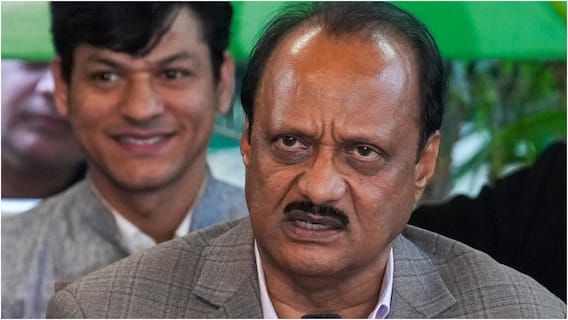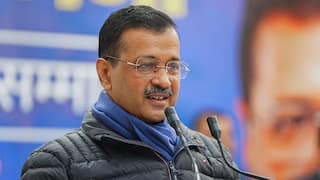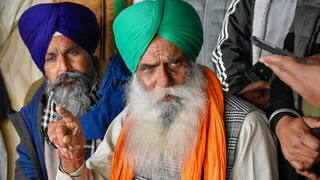Q2 Sees Urban Jobless Rate Fall To 6.4%, Lowest In 6 Years
The unemployment rates for males and females aged 15 and above declined to 5.7 per cent and 8.4 per cent, respectively, during the July-September 2024 period

The urban unemployment rate fell to 6.4 per cent in the second quarter of the current financial year, marking the lowest level in nearly six years, states the official data released on Monday. According to the Periodic Labour Force Survey (PLFS) for July-September 2024, released by the Ministry of Statistics and Programme Implementation (MoSPI), the labour force participation rate (LFPR) reached a record high of 50.4 per cent, reported the Economic Times on Tuesday.
Madan Sabnavis, Chief Economist at Bank of Baroda, explained that the increase in employment is likely due to the hiring of fresh recruits by companies during this period. He also pointed to the strong demand reflected in the Purchasing Managers Index (PMI), which remained above 50, indicating robust labour demand and higher workforce intake, states the report.
The unemployment rates for males and females aged 15 and above declined to 5.7 per cent and 8.4 per cent, respectively, during the July-September 2024 period.
Jammu & Kashmir recorded the highest unemployment rate at 11.8 per cent, followed by Odisha at 10.6 per cent, Bihar at 10.4 per cent, Kerala at 10.1 per cent, Rajasthan at 8.9 per cent, and Himachal Pradesh at 8.7 per cent. The Periodic Labour Force Survey (PLFS) for this period covered 45,005 households and 170,598 individuals.
The male labour force participation rate (LFPR) reached a record high of 75 per cent, while the female LFPR stood at 25.5 per cent, slightly down from 25.6 per cent in the January-March 2024 period. Overall, the LFPR for the first quarter of 2024-25 was 50.1 per cent, compared to 49.3 per cent in Q2 of 2023-24.
Nearly half of the workforce (50.1 per cent) were regular wage or salaried employees, followed by the self-employed at 39.9 per cent, and casual labour at 10.7 per cent.
Among the self-employed, 32.6 per cent were own-account workers or employers, while 6.2 per cent worked as helpers in household enterprises.
More than half of female workers (54 per cent) were regular wage or salaried employees, although this share slightly decreased from 54 per cent in the previous quarter. In comparison, 47.9 per cent of male workers held regular wage or salaried positions.
Women's participation in self-employment has increased, particularly in roles as helpers in household enterprises. "This indicates the growth of more small businesses," said Madan Sabnavis, Chief Economist at Bank of Baroda.
Of the 22 states and Union Territories surveyed, 13 had a higher LFPR than the national average. Himachal Pradesh had the highest rate at 61.8 per cent, followed by Gujarat (53.9 per cent), West Bengal (53.8 per cent), Telangana (53.5 per cent), Assam (53.2 per cent), and Maharashtra (52.8 per cent).
The LFPR for youth (ages 15-29) stood at 41.6 per cent in the July-September 2024 period, with 59.8 per cent for males and 21.9 per cent for females. Meanwhile, the youth unemployment rate was 15.9 per cent, with 14.2 per cent for males and 21 per cent for females.
More women are entering the workforce, unemployment rates are falling, and incomes are steadily rising across various categories, according to a statement released by the Ministry of Labour and Employment on Monday.
The latest data from the Periodic Labour Force Survey (PLFS) shows that the female labour force participation rate (LFPR) has risen from 23.3 per cent in 2017-18 to 41.7 per cent in 2023-24. Rural women’s participation saw a significant increase of 23 percentage points, reflecting a growing contribution of women to rural economic activity, the release noted.
The unemployment rate for women also dropped from 5.6 per cent to 3.2 per cent over the same period.
Among women with postgraduate degrees and higher, workforce participation increased from 34.5 per cent in 2017-18 to 39.6 per cent in 2023-24. Additionally, 23.9 per cent of women with higher secondary education and 50.2 per cent with primary-level education are now part of the workforce.
Despite these gains, education and domestic responsibilities remain major barriers keeping women out of the workforce. While 37.94 per cent of women cited education as the primary reason, focusing on acquiring higher qualifications, 43.04 per cent pointed to childcare and homemaking duties as significant obstacles.
Also Read : Equity Index Investing: A No-Nonsense, Low-Cost Way To Secure Your Child's Education Needs
Trending News
Top Headlines






































